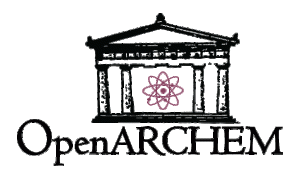
Organic residue sampling can occur in a pristine lab or in less-than-ideal conditions in the field, and an intact closed vessel freshly excavated from a tomb may yield better results than an acid-scrubbed sherd hidden in the back of a museum storage closet. Both can offer insights into their contents and the cultures which created them, but their treatment during and after excavation and the conditions in which they were stored – steps which might have increased exposure to external contaminants prior to sampling – will obviously have an impact on the compounds within.
One of the subsidiary goals of the OpenARCHEM project is to help scholars to be able to refine methodologies of sampling and interpretation, and in this vein we feel that information on the condition and quality of a sample should be included in the published record. In order to facilitate comparisons across data sets, we have included in our database a basic rubric which helps specialists to indicate the relative purity of the sample taken. These indicators do not in any way mark the quality of the scientist or the sampling strategy, and indeed it is clear that many organic residue specialists have employed methods to dial out impurities, which are often described. This assessment merely helps readers to assess the initial state of the vessel or objects sampled and therein its relative risk of exposure to contaminants.
Sample Quality Rubric
The rubric is divided into five categories, with 5 being the best (those samples with the lowest risk for adulteration), and 1 denoting those samples with the highest risk of external contamination. Relevant factors are open vs. closed vessels, treatment during and after excavation, and conservation actions.
Quality 5: Closed, intact vessels in situ from known archaeological contexts and whose chain of custody is unbroken. Unwashed and otherwise untreated at the site of sampling. (e.g. A vessel from a tomb assemblage, perhaps rinsed or washed on the exterior but with no treatment to the interior)
Quality 4: Intact open vessels or fragmented closed but largely complete vessels in situ from known archaeological context and whose chain of custody is unbroken. Unwashed and otherwise untreated at the site of sampling.
Quality 3: Any diagnostic vessel sherd recovered from known archaeological context but unwashed and untreated.
Quality 2: Any vessels – open or closed – which have been water-washed or salt-washed on the interior or at the site of sampling. (This includes shipwreck vessels). OR any legacy object for which the chain of custody is unknown, but which shows no additional signs of washing, cleaning, or conservation. (The rule of thumb here is that if you cannot prove that it has not been washed, you have to assume that it has been.)
Quality 1: Any vessels – open or closed – regardless of context or chain of custody which show signs of scrubbing, acid-washing or other conservation cleaning, or repair/reconstruction using glues, resins or plasters which might have introduced foreign contaminants or dissolved original compounds.
